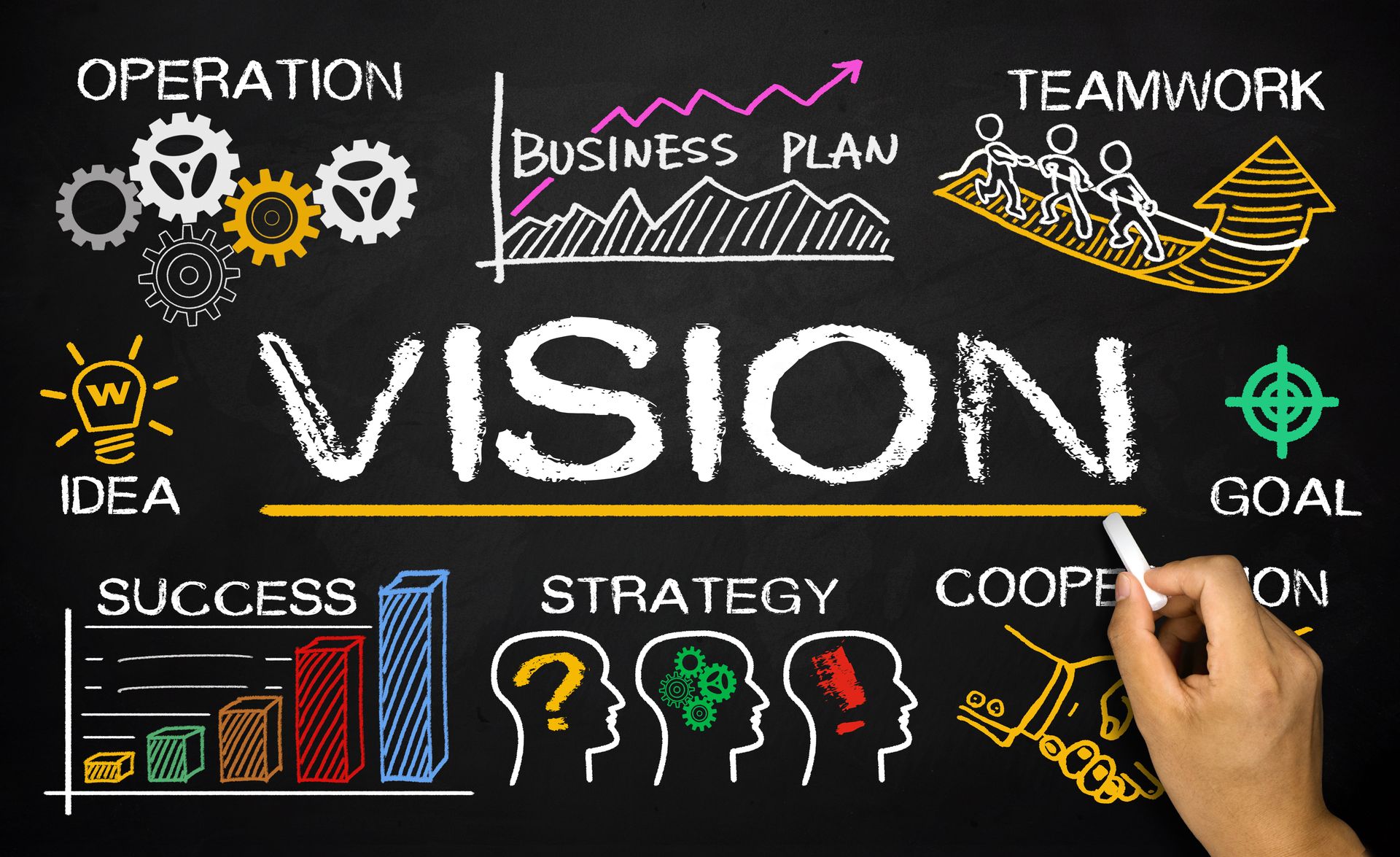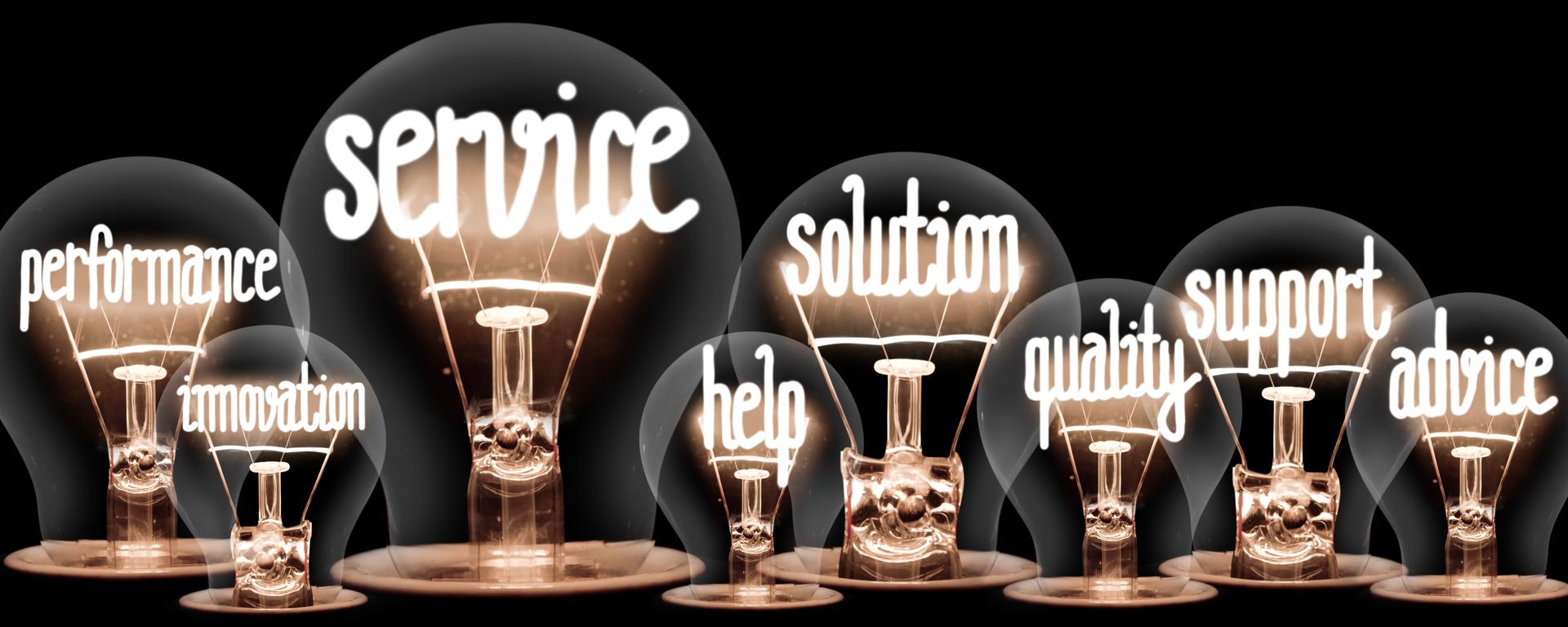Achieving Excellence
Embark on a journey through the multifaceted world of operational excellence with us in this enlightening series, "Operational Excellence Unveiled." In an era where sustainability, efficiency, and systematic growth have become pivotal, understanding and implementing a framework for operational excellence is paramount for any organization aspiring to thrive amidst the complexities of the modern business landscape. This series will not only guide you through the foundational steps towards achieving operational excellence but also delve deeply into each component, offering insights, methodologies, and strategic approaches that are crucial in driving sustainable growth and profitability.
In this inaugural article of the series, we unfold a step-by-step guide to achieving operational excellence, providing a roadmap that navigates through defining visions, engaging teams, implementing continuous improvement methodologies, and more. This guide is not merely a set of instructions but a gateway to a deeper exploration of each step in subsequent articles, where we will dissect, analyze, and provide practical insights into every aspect of the journey towards operational excellence.
We are going to cover:
- Define Your Vision and Goals:
- Crafting a Clear Organizational Vision
- Aligning Goals with Organizational Values
- Ensuring Strategic Alignment Across All Levels
- Understand Your Current Operations:
- Employing Tools for Effective Process Mapping
- Identifying Bottlenecks and Inefficiencies
- Establishing a Baseline for Improvement Initiatives
- Engage Your Team:
- Fostering a Culture of Open Communication
- Encouraging and Valuing Feedback
- Building a Collaborative Environment
- Identify Areas for Improvement:
- Leveraging Process Maps for Insightful Analysis
- Prioritizing Areas for Maximum Impact
- Developing a Structured Approach to Improvement
- Implement Continuous Improvement Methodologies:
- Exploring Lean, Six Sigma, and TQM
- Tailoring Methodologies to Organizational Needs
- Ensuring Sustainable Implementation and Adoption
- Focus on Customer Satisfaction:
- Establishing Mechanisms for Gathering Customer Feedback
- Aligning Operations with Customer Expectations
- Building a Customer-Centric Organization
- Monitor and Measure:
- Developing and Implementing KPIs
- Ensuring Accurate and Insightful Data Analysis
- Utilizing Metrics for Informed Decision-Making
- Foster a Culture of Excellence:
- Embedding Excellence into Organizational Culture
- Celebrating Success and Encouraging Continuous Improvement
- Ensuring Alignment with Organizational Objectives
- Stay Agile and Adaptable:
- Navigating Through the Evolving Business Landscape
- Ensuring Organizational Flexibility
- Adapting Strategies to Emerging Challenges and Opportunities
- Review and Refine:
- Establishing Regular Review Mechanisms
- Ensuring Continuous Improvement and Refinement
- Adapting to Evolving Needs and Challenges

Define Your Vision and Goals:
Understanding the Importance of Vision: A clear vr for any organization. It provides direction, instills purpose, and motivates teams to achieve more. Without a well-defined vision, businesses can drift aimlessly, making it challenging to achieve operational excellence or any significant milestone.
Steps to Define Your Vision:
- Brainstorming Sessions: Gather key stakeholders, including top management, department heads, and even frontline employees, for brainstorming sessions. Discuss the company's future, what you want to achieve, and where you see the organization in the next 5, 10, or even 20 years.
- Analyze Market Trends: Understand the current market trends and future predictions in your industry. This will help you align your vision with market realities and ensure that your organization remains relevant and competitive.
- Consider Customer Needs: Your vision should resonate with your customers' needs and aspirations. Engage with your customers, gather feedback, and understand their pain points and desires.
Setting Clear Goals:
- SMART Goals: Ensure that your goals are Specific, Measurable, Achievable, Relevant, and Time-bound. This framework ensures that goals are clear and actionable.
- Align with Vision: Every goal you set should align with your overarching vision. If a goal doesn't contribute to your vision, reconsider its relevance.
- Departmental Goals: Break down the broader organizational goals into departmental or team-specific goals. This ensures that every part of the organization is working in harmony towards achieving operational excellence.
Regular Review:
- Annual Retreats: Organize annual retreats or strategy sessions to review and, if necessary, refine the vision and goals. As the business landscape changes, it's essential to ensure that your vision remains relevant and achievable.
- Feedback Mechanism: Establish a feedback mechanism where employees at all levels can share their insights and suggestions regarding the vision and goals. This inclusive approach ensures that the vision is holistic and has buy-in from the entire organization.
Understand Your Current Operations:
The Significance of Operational Awareness: Before embarking on a journey towards operational excellence, it's imperative to have a comprehensive understanding of your current operations. This knowledge serves as the baseline from which improvements can be measured and provides insights into areas that require attention.
Steps to Understand Your Current Operations:
- Process Mapping: Use tools like flowcharts, swimlane diagrams, or value stream mapping to visually represent each step of your core processes. This visualization helps in identifying inefficiencies, redundancies, and bottlenecks.
- Stakeholder Interviews: Engage with employees across different departments and hierarchies. Their day-to-day experiences can offer invaluable insights into operational challenges and areas of improvement.
- Data Collection: Gather data on key operational metrics such as cycle times, defect rates, customer complaints, and inventory levels. Analyzing this data can highlight performance trends and pinpoint problematic areas.
- Technology Audit: Review the technological tools and platforms currently in use. Determine if they are up-to-date, if they meet the organization's needs, and if employees are adequately trained to use them effectively.
- Supplier and Vendor Assessment: Evaluate the performance of suppliers and vendors. Their efficiency, reliability, and quality can significantly impact your operations.
Challenges in Understanding Operations:
- Resistance to Change: Employees might be resistant to scrutiny or change, fearing it might lead to job losses or increased workload. It's essential to communicate that the goal is continuous improvement and not blame.
- Data Overload: While data is crucial, it's easy to get overwhelmed. Focus on key metrics that align with your operational goals and vision.
- Operational Silos: Different departments might operate in silos, leading to a lack of holistic understanding. Encourage inter-departmental collaboration and knowledge sharing.
Benefits of a Thorough Understanding:
- Informed Decision Making: With a clear understanding of current operations, decisions are data-driven, reducing risks and ensuring optimal resource allocation.
- Employee Engagement: When employees are involved in the process of understanding and improving operations, they feel valued and are more likely to be engaged and committed.
- Customer Satisfaction: By identifying and rectifying operational inefficiencies, the quality of products or services improves, leading to increased customer satisfaction.

Engage Your Team:
The Power of Team Engagement: At the heart of any successful operational transformation lies a fully engaged team. When employees are actively involved, understand the company's vision, and see the value in the changes being implemented, they become powerful advocates and drivers of operational excellence.
Steps to Engage Your Team:
- Open Communication: Foster an environment where open communication is encouraged. Regularly update your team about organizational goals, the importance of operational excellence, and how each member plays a pivotal role in this journey.
- Inclusive Decision Making: Involve employees in decision-making processes, especially when those decisions impact their roles or departments. This not only provides diverse perspectives but also fosters a sense of ownership.
- Training and Development: Invest in training programs to equip your team with the necessary skills and knowledge. Whether it's new software tools, quality management techniques, or soft skills, continuous learning is key.
- Feedback Mechanisms: Implement systems where employees can provide feedback, voice concerns, or suggest improvements. This could be in the form of suggestion boxes, regular town hall meetings, or anonymous surveys.
- Recognition and Rewards: Celebrate successes, no matter how small. Recognize and reward employees who showcase exceptional commitment to operational excellence. This can be through bonuses, public acknowledgment, or opportunities for career advancement.
Challenges in Team Engagement:
- Resistance to Change: Change can be daunting. Address concerns head-on, provide reassurance, and highlight the long-term benefits of the changes being implemented.
- Diverse Motivations: Different team members might have varied motivations. It's crucial to understand these individual drivers and tailor engagement strategies accordingly.
- Resource Constraints: Time and budget constraints can sometimes limit engagement initiatives. However, it's essential to prioritize team engagement as a long-term investment.
Benefits of an Engaged Team:
- Increased Productivity: Engaged employees are more motivated, leading to higher productivity levels and better overall performance.
- Innovation: When employees feel valued and engaged, they are more likely to think outside the box, leading to innovative solutions and ideas.
- Reduced Turnover: Engaged employees are more likely to remain loyal to the company, reducing turnover rates and the associated costs of hiring and training new staff.
- Positive Work Environment: Engagement fosters a positive work environment where employees collaborate, support each other, and work towards common goals.
Identify Areas for Improvement:
The Essence of Continuous Improvement: Operational excellence is rooted in the principle of continuous improvement. Identifying areas that need enhancement is the first step in this ongoing journey. By pinpointing these areas, organizations can allocate resources effectively, streamline processes, and drive tangible results.
Steps to Identify Areas for Improvement:
- Data Analysis: Dive deep into operational data. Metrics like production times, defect rates, customer complaints, and inventory turnover can reveal inefficiencies or areas that need attention.
- Feedback Loops: Establish regular feedback mechanisms with both employees and customers. Their firsthand experiences can provide invaluable insights into areas that might be overlooked in data analysis.
- Process Audits: Periodically review and audit processes. Look for redundancies, bottlenecks, or steps that don't add value. Tools like value stream mapping can be particularly effective here.
- Benchmarking: Compare your operations with industry standards or competitors. This can highlight areas where you're lagging and provide insights into best practices.
- Technology Assessment: Regularly evaluate the technology and tools in use. Outdated or inefficient technology can be a significant hindrance to operational excellence.
Challenges in Identifying Improvement Areas:
- Complacency: "If it isn't broken, don't fix it" can be a common mindset. Overcoming this complacency and fostering a culture of continuous improvement is crucial.
- Overwhelming Data: While data is invaluable, it can be overwhelming. Focus on key metrics and ensure that data is presented in a digestible manner, enabling informed decision-making.
- Fear of Criticism: Employees might be hesitant to point out inefficiencies or problems for fear of blame or criticism. It's essential to foster a no-blame culture where constructive feedback is encouraged.
Benefits of Identifying Improvement Areas:
- Resource Optimization: By pinpointing areas that need attention, resources (both time and money) can be allocated more effectively, leading to better ROI.
- Enhanced Customer Satisfaction: Addressing operational inefficiencies often leads to better product quality and service, resulting in increased customer satisfaction and loyalty.
- Employee Morale: When employees see that their feedback is valued and acted upon, it boosts morale and engagement.
- Competitive Advantage: Continuously improving and optimizing operations can provide a significant competitive advantage, setting your organization apart in the marketplace.

Implement Continuous Improvement Methodologies:
The Pillar of Operational Excellence: Continuous improvement methodologies are the backbone of operational excellence. These structured approaches provide the tools and frameworks necessary to systematically enhance operations, ensuring that businesses remain agile, efficient, and customer-centric.
Key Continuous Improvement Methodologies:
- Lean: Originating from the Toyota Production System, Lean focuses on eliminating waste in all forms from processes. It emphasizes maximizing customer value while minimizing resources, leading to streamlined operations and increased efficiency.
- Six Sigma: A data-driven approach, Six Sigma aims to reduce variability in processes, leading to consistent and high-quality outputs. It uses statistical tools to identify and eliminate defects, ensuring processes are optimized to meet customer expectations.
- Total Quality Management (TQM): TQM is a holistic approach that emphasizes quality in all aspects of the business. It involves continuous feedback, employee involvement, and a relentless focus on customer satisfaction.
- Kaizen: A Japanese term meaning "change for better," Kaizen promotes continuous, incremental improvements. It involves all employees, from top management to frontline workers, and focuses on improving productivity and working standards.
Steps to Implement These Methodologies:
- Training and Education: Before implementing any methodology, ensure that employees are adequately trained. This might involve workshops, seminars, or even bringing in external experts.
- Pilot Programs: Start with pilot programs in specific departments or processes. This allows you to test the methodology, make adjustments, and understand its impact before a full-scale implementation.
- Data Collection: Gather data before and after implementation. This provides a clear picture of the improvements and helps in refining the approach.
- Feedback Mechanisms: Encourage feedback from employees. Their on-the-ground insights can provide valuable information on the challenges and benefits of the methodology being implemented.
- Regular Reviews: Continuously review the implementation process. Assess the results, make necessary adjustments, and ensure alignment with organizational goals.
Challenges in Implementation:
- Resistance to Change: Employees might be skeptical or resistant to new methodologies. Clear communication, training, and showcasing early successes can help in gaining buy-in.
- Resource Constraints: Implementing continuous improvement methodologies might require time, money, and other resources. It's essential to view this as a long-term investment.
- Overwhelming Complexity: Some methodologies, especially when implemented without proper understanding, can seem complex. Simplify the approach, focus on key principles, and ensure clarity at all levels.
Benefits of Implementing Continuous Improvement Methodologies:
- Operational Efficiency: These methodologies streamline processes, reduce waste, and ensure optimal resource utilization, leading to enhanced operational efficiency.
- Cost Savings: By reducing defects, waste, and inefficiencies, businesses can realize significant cost savings.
- Enhanced Customer Satisfaction: Consistent quality and improved processes lead to products and services that meet or exceed customer expectations, resulting in increased satisfaction and loyalty.
- Employee Engagement: When employees see the tangible benefits of these methodologies, it boosts morale, engagement, and a sense of ownership.

Focus on Customer Satisfaction:
The Heartbeat of Business Success: In today's competitive marketplace, customer satisfaction is more than just a metric; it's the lifeblood of business success. Ensuring that customers are not only satisfied but delighted with your products and services can lead to increased loyalty, positive word-of-mouth, and sustained growth.
Understanding Customer Satisfaction:
- Defining Satisfaction: Customer satisfaction is the measure of how products and services provided by a company meet or surpass customer expectations. It's an indicator of how well the business understands and caters to its customers' needs.
- The Customer Journey: Satisfaction is determined at every touchpoint in the customer journey, from the initial interaction and purchase to after-sales support and repeat business.
Steps to Enhance Customer Satisfaction:
- Gather Feedback: Use surveys, feedback forms, and direct interactions to understand what customers like and where they feel improvements are needed. Tools like Net Promoter Score (NPS) can provide insights into overall satisfaction levels.
- Act on Feedback: Merely collecting feedback isn't enough. Analyze the data, identify trends, and implement changes based on customer suggestions.
- Quality Assurance: Ensure that products and services maintain a high standard of quality. Regular quality checks, audits, and reviews can help in achieving this.
- Personalized Experiences: In the age of digital transformation, customers expect personalized experiences. Use data analytics and CRM systems to tailor interactions based on individual customer preferences.
- Responsive Customer Support: Ensure that customer queries, complaints, and feedback are addressed promptly and effectively. A dedicated and well-trained customer support team can make a significant difference.
- Transparent Communication: Keep customers informed about product updates, company news, and any potential issues. Transparency builds trust and strengthens the customer-business relationship.
Challenges in Focusing on Customer Satisfaction:
- Evolving Expectations: Customer expectations are constantly evolving. Keeping up with these changing demands requires agility and a proactive approach.
- Balancing Feedback: While it's essential to act on feedback, not all suggestions will align with the company's vision or capabilities. Striking a balance is crucial.
- Resource Allocation: Ensuring high levels of customer satisfaction might require investments in technology, training, and other resources. Prioritizing and allocating these resources effectively is a challenge.
Benefits of Prioritizing Customer Satisfaction:
- Customer Loyalty: Satisfied customers are more likely to remain loyal, leading to repeat business and long-term relationships.
- Positive Word-of-Mouth: Happy customers often become brand ambassadors, sharing their positive experiences with friends, family, and on social media.
- Competitive Advantage: In industries where products and services are similar, customer satisfaction can be a key differentiator, setting your business apart from competitors.
- Increased Revenue: High levels of customer satisfaction often correlate with increased sales and revenue, as satisfied customers tend to purchase more and more frequently.
Monitor and Measure:
The Cornerstone of Continuous Improvement: Monitoring and measuring are integral components of operational excellence. They provide the data-driven foundation upon which informed decisions are made, strategies are refined, and continuous improvement is realized.
Understanding the Importance of Monitoring and Measuring:
- Data-Driven Decisions: In the age of information, decisions backed by concrete data are more likely to yield positive results. Monitoring and measuring provide the necessary insights to make these decisions.
- Identifying Trends: Regular monitoring can help businesses identify trends, both positive and negative, allowing them to capitalize on opportunities or address challenges proactively.
- Validating Changes: When changes are implemented, be it a new process or a technological tool, monitoring and measuring validate their effectiveness.
Steps to Effectively Monitor and Measure:
- Define Key Performance Indicators (KPIs): Clearly define what metrics are crucial for your business. KPIs should align with business goals and provide insights into operational performance.
- Use the Right Tools: Invest in monitoring and analytics tools that cater to your specific needs. Whether it's a sophisticated Business Intelligence (BI) system or a simple analytics dashboard, ensure it provides actionable insights.
- Regular Reporting: Establish a routine for regular reporting. Weekly, monthly, or quarterly reports can help stakeholders stay informed and make timely decisions.
- Feedback Loops: Apart from quantitative data, qualitative feedback from employees, customers, and other stakeholders can provide invaluable insights.
- Benchmarking: Compare your performance metrics with industry standards or competitors. This can provide a clearer picture of where you stand in the market and what areas need attention.
- Continuous Review: Don't just collect data; review it continuously. Look for patterns, anomalies, or any insights that can drive further improvement.
Challenges in Monitoring and Measuring:
- Data Overload: In the era of big data, businesses can easily get overwhelmed with the sheer volume of data. It's essential to focus on what's relevant and avoid analysis paralysis.
- Interpreting Data: Raw data in itself might not be very informative. The challenge lies in interpreting this data, drawing insights, and translating it into actionable strategies.
- Maintaining Data Integrity: Ensuring that the data being monitored and measured is accurate and reliable is crucial. Any discrepancies can lead to misguided decisions.
Benefits of Effective Monitoring and Measurement:
- Informed Strategy Development: With clear insights into operational performance, businesses can develop strategies that are more likely to succeed.
- Resource Optimization: By understanding what's working and what's not, businesses can allocate resources more effectively, ensuring maximum ROI.
- Enhanced Accountability: When performance is continuously monitored, it fosters a culture of accountability, where teams and individuals are more aligned with organizational goals.
- Proactive Problem Solving: Instead of reacting to challenges, businesses can proactively address them, leading to smoother operations and reduced disruptions.
Foster a Culture of Excellence:
The Bedrock of Sustained Success: A culture of excellence goes beyond processes, tools, or strategies. It's an ingrained mindset, a collective commitment to consistently deliver the best, and a pursuit of higher standards in every endeavor. Such a culture ensures that operational excellence is not a one-time project but a way of life within the organization.
Understanding a Culture of Excellence:
- Shared Vision: At the heart of a culture of excellence is a shared vision where every team member understands the organization's goals and their role in achieving them.
- Continuous Improvement: It's a culture where the status quo is constantly challenged, and there's a relentless pursuit of better ways to do things.
- Accountability and Ownership: Employees take responsibility for their actions, celebrate successes, and learn from failures.
Steps to Foster a Culture of Excellence:
- Leadership by Example: Leaders play a pivotal role. Their commitment to excellence, work ethic, and values set the tone for the entire organization.
- Open Communication: Create channels for open dialogue where feedback, ideas, and concerns are freely shared and valued.
- Training and Development: Invest in continuous learning opportunities. Equip employees with the skills, knowledge, and tools they need to excel.
- Recognition and Rewards: Celebrate achievements, both big and small. Recognize those who embody the principles of excellence and reward their contributions.
- Feedback Mechanisms: Encourage a culture where feedback, both positive and constructive, is seen as a tool for growth.
- Collaborative Environment: Foster an environment where teams collaborate, share knowledge, and work towards common goals.
Challenges in Fostering a Culture of Excellence:
- Resistance to Change: Changing an organization's culture is challenging. There might be resistance, especially if it requires moving away from long-held beliefs or practices.
- Balancing Excellence with Flexibility: While striving for excellence, it's essential to ensure that the organization remains agile and adaptable.
- Maintaining Momentum: Initially, there might be a lot of enthusiasm, but the challenge lies in maintaining this momentum over the long term.
Benefits of a Culture of Excellence:
- Consistent Performance: Organizations with a culture of excellence tend to deliver consistent results, irrespective of external challenges.
- Employee Engagement: When employees work in a culture that values excellence, they are more engaged, motivated, and committed.
- Customer Loyalty: Excellence in operations often translates to high-quality products and services, leading to satisfied and loyal customers.
- Innovation: A culture that values excellence is also one that encourages innovation, pushing boundaries, and exploring new frontiers.

Stay Agile and Adaptable:
The Imperative of Modern Business: In an ever-evolving business landscape marked by rapid technological advancements, shifting consumer preferences, and global challenges, agility and adaptability are no longer just advantages—they're necessities. Organizations that can pivot quickly in response to change are better positioned to seize new opportunities and navigate challenges.
Understanding Agility and Adaptability:
- Agility: Refers to an organization's ability to move quickly and easily, making swift decisions and implementing changes in response to external or internal shifts.
- Adaptability: Denotes the capability of an organization to adjust to new conditions, evolving its processes, strategies, and structures as required.
Steps to Ensure Agility and Adaptability:
- Embrace a Growth Mindset: Encourage a mindset where change is seen as an opportunity for growth. This perspective fosters resilience and a willingness to adapt.
- Implement Agile Methodologies: Originally from the software development world, Agile methodologies prioritize flexibility, collaboration, and customer feedback. They can be applied to various business functions to enhance responsiveness.
- Continuous Learning: Invest in training and development to ensure that employees are equipped with the latest skills and knowledge. This prepares them to adapt to new tools, technologies, or market conditions.
- Feedback Loops: Establish mechanisms to gather regular feedback from customers, employees, and other stakeholders. This real-time information can guide adjustments and pivots.
- Scenario Planning: Engage in regular scenario planning exercises. By envisioning various future scenarios, organizations can prepare strategies and contingencies, ensuring they're not caught off guard.
Challenges in Staying Agile and Adaptable:
- Organizational Inertia: Larger or older organizations might have established processes and structures that resist change, making agility a challenge.
- Fear of the Unknown: Change can be daunting, and there might be apprehension about moving away from tried-and-tested methods.
- Resource Constraints: Adapting to change might require investments in new technologies, training, or other resources. Balancing these needs with existing commitments can be challenging.
Benefits of Agility and Adaptability:
- Competitive Advantage: Agile and adaptable organizations can quickly capitalize on new opportunities, giving them an edge over competitors.
- Resilience: Such organizations are better equipped to navigate challenges, be they economic downturns, market disruptions, or global crises.
- Customer Centricity: By being agile, organizations can quickly respond to customer feedback and changing preferences, ensuring they consistently meet or exceed customer expectations.
- Employee Satisfaction: An agile environment often empowers employees, giving them the autonomy to make decisions and contribute to change. This can boost morale and job satisfaction.
Review and Refine:
The Cycle of Continuous Evolution: Operational excellence is not a destination but a journey. As the business landscape evolves, so too must an organization's approach to operations. Regularly reviewing and refining processes ensures that businesses remain aligned with their goals, adapt to new challenges, and consistently deliver value.
Understanding the Importance of Review and Refine:
- Continuous Improvement: The essence of operational excellence lies in the continuous pursuit of better ways of doing things. Regular reviews ensure that processes remain optimal and aligned with the organization's objectives.
- Adapting to Change: Whether it's a shift in market dynamics, technological advancements, or internal organizational changes, reviews help businesses adapt and evolve.
Steps to Effectively Review and Refine:
- Scheduled Reviews: Establish a routine, be it quarterly, bi-annually, or annually, for comprehensive operational reviews. This ensures that reviews are systematic and consistent.
- Involve Stakeholders: Engage a diverse group of stakeholders in the review process, from top management to frontline employees. Different perspectives can offer invaluable insights.
- Analyze Performance Metrics: Dive deep into operational data to assess performance. Look for trends, anomalies, and areas that have seen significant change.
- Feedback Sessions: Organize sessions where teams can share feedback, discuss challenges faced, and suggest improvements. An open dialogue can lead to actionable insights.
- Benchmarking: Regularly compare your operations against industry standards or competitors. This can highlight areas of excellence and those that need attention.
- Implement Changes: Post-review, prioritize and implement the suggested refinements. Ensure that there's a clear action plan and allocate resources accordingly.
Challenges in the Review and Refine Process:
- Resistance to Change: Post-review changes might meet resistance, especially if they disrupt established routines. Clear communication and training can help in easing transitions.
- Analysis Paralysis: While reviews provide a wealth of data and feedback, the challenge lies in distilling actionable insights and not getting overwhelmed.
- Balancing Short-Term and Long-Term: Reviews might highlight both immediate concerns and long-term strategic shifts. Balancing these priorities can be challenging.
Benefits of Regular Review and Refinement:
- Operational Efficiency: Continuous refinement ensures that processes remain streamlined, resources are optimally utilized, and operations run smoothly.
- Proactive Problem Solving: Regular reviews can help in identifying potential challenges before they escalate, allowing for proactive solutions.
- Alignment with Goals: As organizational goals evolve, reviews ensure that operations remain aligned with these objectives.
- Employee Engagement: When employees see that their feedback is valued and leads to positive changes, it boosts morale and fosters a sense of ownership.

Connect with Colabmo:
In today's dynamic and competitive business environment, the pursuit of operational excellence is more than just a goal—it's a fundamental requirement for organizations aiming for long-term viability and leadership. This commitment transcends mere efficiency; it's about integrating best practices, continuous improvement, and adaptability into the very core of an organization's ethos. By championing principles such as agility, customer-centricity, and introspection, businesses not only equip themselves to tackle the immediate challenges of the present but also to proactively shape and harness the opportunities that await.
However, achieving this level of excellence is not a solitary endeavor. Partnering with experts who bring in-depth knowledge, experience, and innovative solutions can significantly accelerate this journey. This is where Colabmo steps in. With its team of vetted top-tier Subject Matter Experts, Colabmo offers a unique blend of consultancy experience combined with end-to-end support. Their experts are industry luminaries, adept at identifying and enhancing business processes and workflows, ensuring that your organization's operations are streamlined and efficient.
Moreover, Colabmo's Enterprise Group specializes in deploying and maintaining a wide array of enterprise solutions—from ERP and LMS to DMS, PLM, CRM, and more. Their platform-agnostic approach, combined with expertise in platforms like Odoo, Quickbooks Enterprise, and SAP, ensures that businesses receive tailored solutions that align perfectly with their unique requirements.
Furthermore, Colabmo's Learning Management System not only empowers teams with tailored courses and expert-led sessions but also provides a transparent and secure validation of their accomplishments through blockchain technology. This holistic approach ensures that teams are not only aligned with industry standards but are also recognized for their achievements.
In essence, by integrating the ethos of operational excellence with the expertise and solutions offered by Colabmo, businesses are not just navigating the complexities of today's market but are also laying a robust foundation for a future marked by innovation, leadership, and unparalleled success. As you delve deeper into the intricacies of operational excellence in this series, remember that with Colabmo by your side, achieving and sustaining this excellence becomes a collaborative, enriching, and transformative experience.
Ready to elevate your operational excellence journey? Connect with Colabmo today and explore how their expert solutions can drive transformative results for your organization. Don't wait; the future of operational excellence is just a click away!